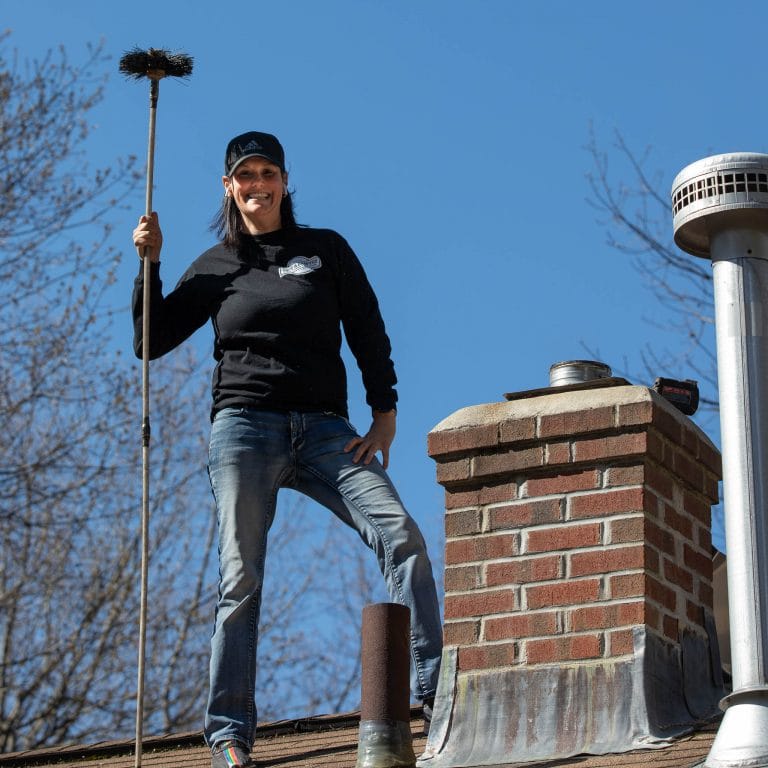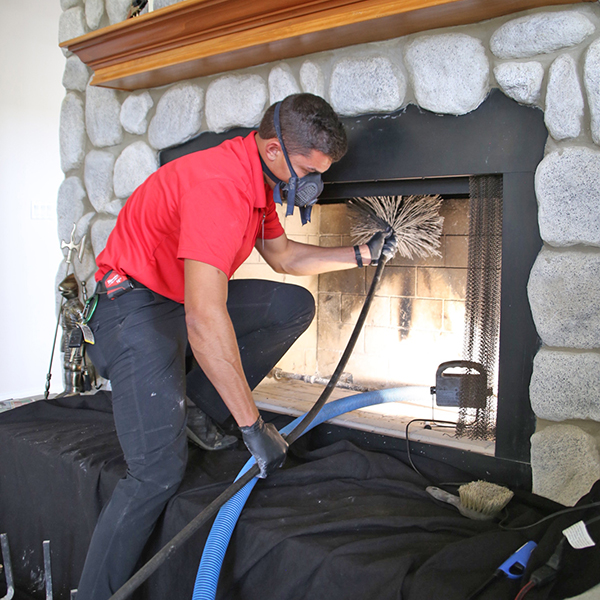Smokeshaft Safety First: Premier Chimney Clean San Jose Providers Revealed
Smokeshaft Safety First: Premier Chimney Clean San Jose Providers Revealed
Blog Article
Chimney Cleansing: A Step-by-Step Overview to Maintaining a Healthy Fireplace
Normal smokeshaft cleaning is a vital part of this maintenance regimen. By adhering to these standards, you will learn how to collect the required tools, perform an aesthetic assessment, clear debris and build-up, move the chimney, and finish the last steps for recurring upkeep.
Gathering the Necessary Devices
To start the procedure of chimney cleansing, the very first step is to gather all the needed tools. Having the right devices available guarantees a effective and secure cleansing process. The crucial tools for smokeshaft cleaning consist of a chimney brush, a ladder, drop fabrics or plastic sheets, a flashlight, gloves, and a dust mask.
The smokeshaft brush is the main device used to remove residue and creosote accumulation from the flue. It is very important to select a brush that matches the dimension and form of your smokeshaft. Additionally, a tough ladder is required to access the smokeshaft safely. Ensure the ladder is stable and positioned on a level surface.
A flashlight is important for checking the smokeshaft's interior for any signs of damage or obstructions. Gloves are essential to protect your hands from soot and other unsafe substances, while a dust mask helps stop the breathing of particles.
Executing an Aesthetic Inspection

Using a flashlight, very carefully take a look at the indoor wall surfaces of the smokeshaft for any signs of damages, such as splits, loose bricks, or mortar degeneration. These concerns can endanger the smokeshaft's architectural integrity and position a major security danger. In addition, look for any type of indicators of water damages, such as discoloration or efflorescence, as this can show a dripping smokeshaft cap or blinking.
Next, examine the chimney flue for any type of obstructions. Search for the existence of nesting materials, leaves, or particles that might have gathered with time (Chimney Sweep San Jose). These blockages can limit air flow, enhance the danger of carbon monoxide gas accumulation, and impede the chimney's ability to effectively air vent smoke
Throughout the aesthetic evaluation, pay very close attention to the chimney crown, which is the top surface that protects the smokeshaft from wetness. Try to find fractures or missing pieces in the crown, as these can allow water to get in the smokeshaft and trigger significant damages.
Clearing Particles and Build-up
After finishing the visual evaluation, the following action in smokeshaft cleansing involves clearing up particles and accumulation to make sure the appropriate functioning of the fire place. Gradually, particles such as fallen leaves, twigs, and pet nests can collect in the chimney, blocking the flow of air and creating possible fire risks. Additionally, the build-up of creosote, a tar-like substance, is an usual issue in chimneys. Creosote is created when timber or fossil fuels are melted, and if not eliminated on a regular basis, it can result in smokeshaft fires.
To remove particles and build-up, it is essential to make use of the right tools and methods. A chimney brush, particularly made for this purpose, is utilized to get rid of loose particles and creosote from the chimney wall surfaces. It is important to choose a brush that matches the size of your chimney to make certain reliable cleaning. Before beginning the cleansing procedure, see to it to cover the fireplace available to avoid particles from falling under the room.
To begin, insert the brush into the chimney and relocate up and down, scrubbing the walls to remove any kind of particles or creosote. Make use of a sweeping activity to ensure comprehensive cleaning. It is suggested to begin with all-time low and function your method up. When the brushing is total, utilize a vacuum cleanser or a chimney brush extension to eliminate the dislodged debris from the fireplace.

Sweeping the Smokeshaft
The sweeping of the smokeshaft is an essential step in maintaining a healthy and balanced fire place. With time, residue, creosote, and various other particles can collect in the chimney, blocking the flow of air and possibly creating an unsafe build-up of combustible materials. Normal chimney sweeper not just makes sure appropriate ventilation but also avoids the risk of chimney fires.
When it comes to chimney sweeping, it is extremely recommended to hire an expert chimney move. These professionals have the understanding and devices needed to safely and properly eliminate the accumulated particles from your chimney.
It is necessary to note that the regularity of chimney sweeping relies on a number of variables, such as the type of gas used, the quantity of usage, and the kind of chimney. As a basic guideline, it is suggested to have your smokeshaft swept and checked at the very least annually.
Last Steps and Upkeep
After completing the smokeshaft sweeping procedure, the first step in the final maintenance is to check the smokeshaft cap and trigger arrestor. These parts prevent debris, animals, and rainwater from going into the chimney.

Inspect the within of the fire place for any kind of signs of degeneration, such as splits, loosened bricks, or damaged mortar. These problems can impact the architectural honesty and safety and security of the fire place. Get in touch with a specialist chimney sweep or mason to resolve them without delay. if any kind of troubles are identified.
Finally, think about mounting carbon monoxide gas detectors near the fire place and throughout find here your home. These gadgets can find the visibility of this hazardous gas, supplying an early warning system in instance of a chimney malfunction. Frequently inspect and replace the batteries in these detectors to guarantee their performance.
Verdict
In verdict, following a step-by-step overview for smokeshaft cleansing is crucial in maintaining a healthy fireplace. By gathering the necessary devices, doing an aesthetic examination, getting rid of particles and accumulation, and sweeping the chimney, property owners can ensure the safety and security and performance of their fire place. Routine maintenance and cleaning will assist prevent smokeshaft fires and boost air top quality in the home. It is vital to prioritize chimney cleaning as a component of total home upkeep.
The discover here crucial tools for chimney cleaning consist of a chimney brush, a ladder, drop fabrics or plastic sheets, a flashlight, gloves, and a dirt mask.
A chimney brush, especially designed for this objective, is utilized to get rid of loose particles and creosote from the chimney wall surfaces. Routine smokeshaft brushing up not only makes certain proper air flow but additionally avoids the threat of smokeshaft fires.
When it comes to chimney sweeping, it is very suggested to work with a professional smokeshaft sweep. After finishing the chimney sweeping process, the initial step in the last upkeep is to examine the smokeshaft cap and trigger arrestor.
Report this page